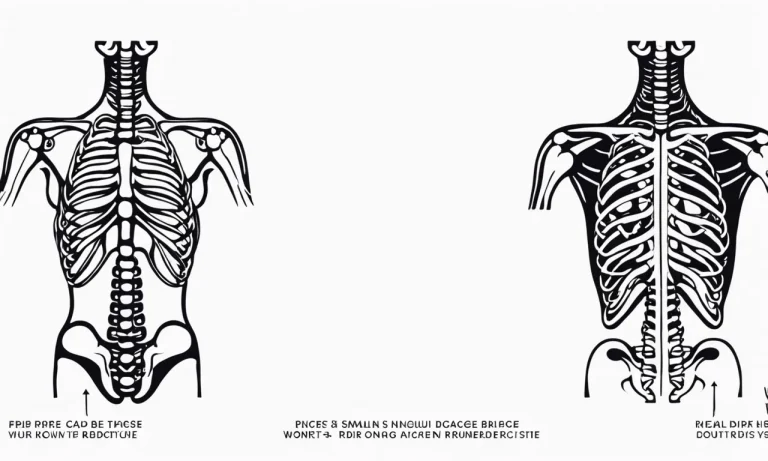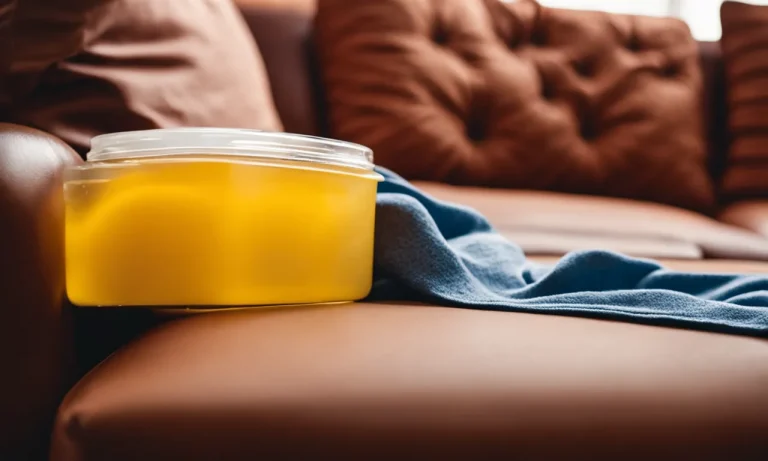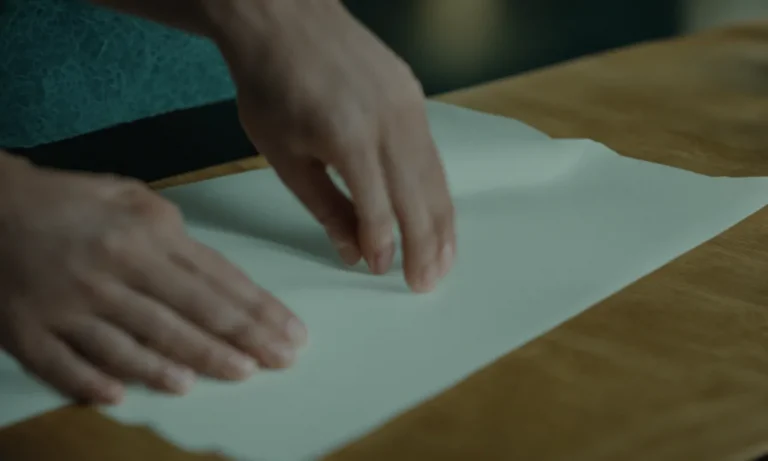A Comprehensive Guide To Printing On Fabric
Printing designs and patterns on fabric has become an increasingly popular way to create unique, customized fabrics and clothing. If you’re looking to print your own designs on fabric, you have several options to choose from.
Each printing method has its own advantages and limitations in terms of cost, required equipment, complexity, and results.
If you’re short on time, here’s a quick answer to your question: The main types of printing on fabric are screen printing, digital printing, sublimation printing, and heat transfer printing. Screen printing is best for simple designs in bulk, while digital printing offers photographic quality for all-over and placement prints.
Sublimation and heat transfer work for printing custom designs on finished garments.
Screen Printing
Screen printing is a popular method of printing on fabric that is best suited for simple designs in bulk. It involves the use of screens, ink, a squeegee, and a printing press.
Best for simple designs in bulk
Screen printing is highly efficient when it comes to printing simple designs in large quantities. It allows for precise and consistent results, making it the preferred choice for businesses and organizations that require a high volume of printed products.
Did you know? Screen printing is commonly used in the textile industry to create vibrant and durable designs on t-shirts, sweatshirts, and other garments. It is also popular for printing posters, banners, and other promotional materials.
Requires screens, ink, squeegee, printing press
To perform screen printing, you will need a few key tools and materials. First, you’ll need screens, which are usually made of a fine mesh stretched over a frame. These screens act as stencils, allowing ink to pass through and create the desired design.
You’ll also need ink, which can be either water-based or plastisol. Water-based inks are more environmentally friendly, while plastisol inks offer greater durability and color vibrancy. Additionally, a squeegee is used to push the ink through the screen and onto the fabric.
Finally, a printing press is required to hold the screen in place and ensure accurate registration of the design. The press allows for consistent pressure and precise alignment, resulting in sharp and professional-looking prints.
Great for t-shirts, posters, etc.
Screen printing is versatile and can be used to print on various types of fabric, making it ideal for t-shirts, sweatshirts, hoodies, and other apparel items. It can also be used for printing on posters, tote bags, and other promotional products.
Fun fact: Screen printing has been around for centuries and has a rich history. It was first used in China during the Song Dynasty (960-1279 AD) and later gained popularity in Europe during the 18th century.
Digital Printing
Digital printing is a modern and innovative method of printing on fabric that offers numerous advantages over traditional printing techniques. With digital printing, intricate designs and vibrant colors can be easily transferred onto fabric, resulting in stunning and high-quality prints.
Offers photographic quality
One of the key benefits of digital printing on fabric is its ability to produce prints with exceptional photographic quality. This means that the fine details, gradients, and color variations in the original design are accurately replicated on the fabric.
Digital printing allows for precise control over color saturation and tone, resulting in prints that are true to the original artwork.
Moreover, digital printing on fabric offers a wide range of colors and shades, allowing designers to bring their creative visions to life. This technology enables the reproduction of vivid and complex designs that were previously difficult to achieve with traditional printing methods.
Works for all-over and placement prints
Digital printing is versatile and can be used for both all-over and placement prints on fabric. All-over prints cover the entire surface of the fabric, creating a visually striking and cohesive design.
On the other hand, placement prints allow for precise positioning of the design on specific areas of the fabric, giving designers more freedom to create unique and eye-catching patterns.
Whether you are looking to create a bold statement piece with an all-over print or a subtle design with a placement print, digital printing offers the flexibility to bring your ideas to life.
Requires a digital textile printer
To achieve the best results with digital printing on fabric, a digital textile printer is required. This specialized printer is designed to handle fabric materials and is equipped with advanced technology that ensures precise color reproduction and print quality.
When choosing a digital textile printer, it is important to consider factors such as resolution, print speed, and ink compatibility. Investing in a high-quality digital textile printer will ensure that your prints are of the highest standard and meet the expectations of your clients or customers.
Some popular digital textile printer brands include Epson, Roland, and Mimaki. It is recommended to research and compare different models to find the one that best suits your specific printing requirements.
Dye Sublimation
Dye sublimation is a popular method used for printing on fabric, particularly polyester fabrics. It involves transferring dye onto the fabric using heat and pressure, resulting in vibrant and long-lasting prints.
This technique has gained popularity in the textile industry due to its excellent color reproduction and durability.
Transfers dye onto polyester fabrics
Dye sublimation works by converting solid dye particles into a gas, which then bonds with the fibers of the polyester fabric. This process ensures that the dye becomes a permanent part of the fabric, rather than sitting on top of it.
As a result, the printed design remains vibrant and fade-resistant, even after multiple washes. It is important to note that dye sublimation is specifically designed for polyester fabrics and may not produce the same results on other types of materials.
Excellent color reproduction
One of the key advantages of dye sublimation printing is its ability to produce vivid and high-quality prints with exceptional color accuracy. The sublimation process allows for a wide color gamut, ensuring that the printed design matches the original artwork or image.
This makes dye sublimation an ideal choice for printing photographs, intricate patterns, and designs with gradients or shading.
Requires sublimation printer and heat press
In order to perform dye sublimation printing, specialized equipment is required. This includes a sublimation printer, which uses heat to transfer the dye onto the fabric, and a heat press, which applies the necessary pressure to ensure proper dye transfer.
These machines work together to create professional-quality prints that are vibrant, durable, and long-lasting.
It’s worth noting that dye sublimation printing is a complex process that requires proper training and expertise. For individuals or businesses looking to venture into fabric printing, it is recommended to seek guidance from professionals or attend training programs to ensure optimal results.
If you’re interested in learning more about dye sublimation printing, you can visit websites like www.dyesub.org or www.rolanddga.com for further information and resources.
Heat Transfer Printing
Heat transfer printing is a popular method used to transfer ink from paper to fabric using heat. It involves printing a design onto a special type of paper, known as transfer paper, and then applying heat to transfer the design onto the fabric.
This method allows for high-quality, detailed prints that are long-lasting and vibrant.
Transfers ink from paper to fabric with heat
Heat transfer printing works by using heat to activate the ink on the transfer paper, causing it to transfer onto the fabric. The heat causes the ink to bond with the fabric fibers, creating a permanent and durable print.
This method is commonly used for printing on t-shirts, bags, and other fabric items.
One advantage of heat transfer printing is that it allows for the printing of complex and intricate designs. The heat helps to ensure that the design is transferred accurately and evenly onto the fabric, resulting in a professional-looking print.
This makes it a great choice for printing custom designs or logos.
Easy for printing custom designs
Heat transfer printing is a relatively simple process that can be done with minimal equipment. All you need is a heat press machine, transfer paper, and a computer with design software. The design is printed onto the transfer paper using an inkjet or laser printer, and then placed onto the fabric.
The heat press machine is then used to apply heat and pressure, allowing the design to transfer onto the fabric.
This method is particularly popular among small businesses and individuals who want to create their own custom designs. It offers a cost-effective way to produce small quantities of personalized items, such as t-shirts for events or promotional merchandise.
Requires heat press vinyl cutter
In order to achieve the best results with heat transfer printing, a heat press machine and a vinyl cutter are often used in combination. The vinyl cutter is used to cut out the design from the transfer paper, ensuring clean edges and precise details.
The heat press machine is then used to apply the heat and pressure needed to transfer the design onto the fabric.
It’s important to note that heat transfer printing works best on certain types of fabrics, such as cotton and polyester. These fabrics have a higher affinity for the ink, resulting in a more vibrant and long-lasting print.
It’s always a good idea to test the fabric before printing in bulk to ensure optimal results.
Conclusion
When deciding on a printing method for fabric, consider the type of design, quantity, fabric type, time frame, and budget. Simple designs in bulk are best for screen printing, while photographic and custom designs are better suited to digital printing methods.
With some investment in equipment, you can start printing unique fabric creations from the comfort of your own home.







